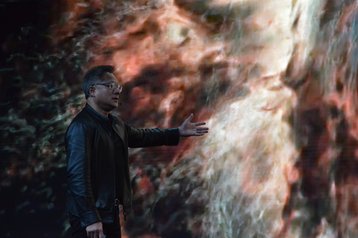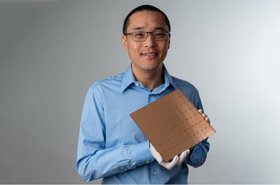The CEO of GPU designer Nvidia visited the White House to discuss AI leadership with the President of the United States.
Jensen Huang met Donald Trump in a closed-door meeting, as tariff threats, export controls, and fears over China cloud the company's future.
"We appreciated the opportunity to meet with President Trump and discuss semiconductors and AI policy," Nvidia said in a statement. "Jensen and the president discussed the importance of strengthening US technology and AI leadership.”
This was the first time the two billionaires have met since Trump's second term began.
Huang was notably absent from Trump's inauguration, a star-studded affair in tech circles - with Amazon founder Jeff Bezos, Google CEO Sundar Pichai, Apple CEO Tim Cook, Meta CEO Mark Zuckerberg, and OpenAI CEO Sam Altman in attendance, after donating to the event. Elon Musk, meanwhile, has been given a job in the White House.
On the same day, Huang visited Nvidia's offices in China.
Discussion points could be wide-ranging. Earlier this month, Trump reiterated long-threatened plans to impose tariffs on foreign-made semiconductors, particularly targeting Taiwan.
Nvidia's GPUs are made by TSMC in Taiwan, and no factories capable of developing its latest hardware exist outside of the country. Even with TSMC building fabs in the US, manufacturing GPUs at scale in the US could take years or decades. The CHIPS Act, which had hoped to spur domestic manufacturing, is now in disarray, and may or may not be revived.
At the same time as restricting what comes into the US, Trump may also impact Nvidia's exports. Biden-era diffusion rules on which countries can import high-end GPUs have yet to come into force, and Nvidia and AMD had hoped to lobby to kill the effort that could restrict where they can sell chips.
But the impact of DeepSeek on global markets - where a purported cheaper model, potentially built with smuggled GPUs caused trillions to evaporate from valuations - has led many powerful AI figures to call for even tighter export controls and an investigation into how Nvidia chips may be ending up in China.
Back in 2018, prior to ever-tightening export controls under both Trump and Biden, Huang told DCD: “If you just think about Nvidia, China is one-third of Nvidia’s business. However, remember, everything we sell to China goes through our distribution partners, gets integrated into computers, it gets integrated into data centers and clouds. The impact to them, to their local market of the local companies is also significant.
“We have a few thousand employees in China, and so to think about today’s companies as either one country or another country, I don’t think really makes sense.
“We sell to China, we have partners in China, China’s ecosystem and economy depends on our technology. We have a lot of great employees in China, they contribute to the creation of products here."
According to Nvidia's latest earnings report, since those comments were made revenue from China has steadily declined to 15 percent, although overall revenues have skyrocketed.




